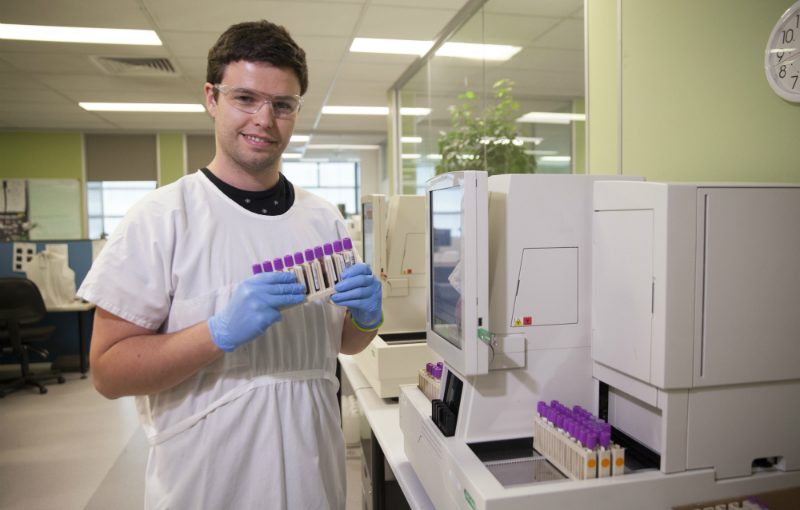There are over 500 pathology laboratories nationwide but few people know what goes on inside them.
These labs process tests for 1.25 million Australians living with diabetes. For every diabetes test performed, at least ten people are involved including collectors, couriers, medical scientists, technicians, IT specialists, registrars and pathologists.
Pathology Awareness Australia ambassador, Associate Professor Graham Jones says: “Pathology tests help to give you an idea of how you are going with your diabetes management and what changes may be required to reduce your risk of complications.”
This is the journey of an HbA1c test.
Sample collection
This is the only part of pathology that is seen by the public. Phlebotomists, more commonly known as collectors, are trained to accurately collect and store patient samples and to provide the correct paperwork with each one.
Specimen delivery
A special courier transports your test sample to the lab making sure it is kept at the right temperature and that it arrives within a suitable time-frame. On arrival in the lab the staff at specimen reception ensure it is distributed to the correct department. Due to the volume of samples delivered daily, staff can be on duty 24/7.
Sorting
It is important that samples are inserted into the correct tube. Professor Jones explains: “With glucose tests, for example, the blood cells in the collection tube are hungry and “eat” glucose. This can lower glucose levels, leading to an inaccurate reading. These samples should be kept in grey top tubes which block glucose use or in a tube which can create a barrier between the glucose and the blood cells.
High Pressure Liquid Chromatography
A medical scientist uses high pressure liquid chromatography (or HPLC) to measure the HbA1c in your blood. The blood sample is mixed with special liquids called reagents, and then passed under pressure through columns filled with a material that separates the blood into its component molecules.
HbA1c occurs when glucose binds to haemoglobin. These molecules differ in size and electrical charge from the other blood molecules so they can be separated. The machine then calculates a percentage of how much haemoglobin in the blood is made up of HbA1c.
Results and reporting
The test results are reviewed and a report is prepared. Patient details such as age and sex are important in deciding whether a test result is normal.
Other conditions can also affect HbA1c results including pregnancy, severe kidney and liver disease, iron deficiency and certain blood disorders.
A pathologist oversees the whole process to ensure it meets Australia’s high quality standards.
With HbA1c results, two sets of numbers are usually reported; the traditional percentages, plus the new Systeme International (SI) units, shown as mmol/mol. These new units were developed by the International Federation of Clinical Chemistry (IFCC) and are sometimes known as IFCC units.
The results are provided to the patient by their doctor but pathologists are always available to answer doctors’ questions about pathology tests.
Find out more about diabetes tests at Lab Tests Online.

